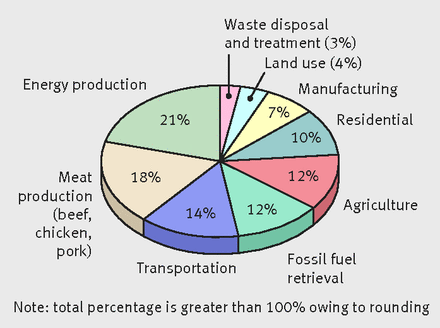What is the relation between population and environmental impact?
During 1971-72, Ehrlich and Holdren identified three factors that create humanity’s environmental (including climatic) impact, related by a simple equation2:Environmental impact, I =P×A×T. in which A is affluence (material consumption and the concomitant “effluence” of pollutants such as carbon dioxide (CO2) per person); T is technology impact per person (in which fossil fuels measure more highly than solar based energy); and P is population (the number of people).
Population’s effect on the other two factors is multiplicative. Reducing P can reduce environmental impact if the other factors are constant. In fig 1⇓, for example, fewer people requiring food would manifestly reduce the startling 30% of greenhouse gas emissions from agriculture and meat production combined (including CO2 from deforestation, methane from livestock, and nitrous oxide from fertilisers).3 That said, other contributory factors, including the worldwide trend towards higher meat consumption, must also be reversed.

Source: Voluntary family planning to minimise and mitigate climate change | The BMJ
Save
Save

